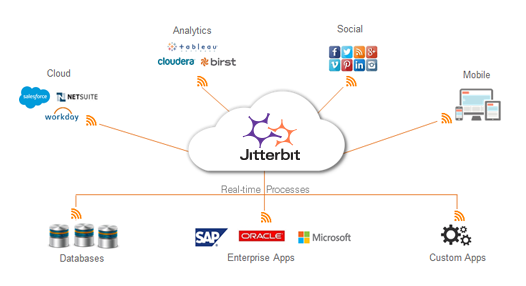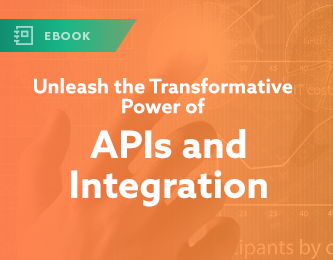Integration is one of the oldest concepts in computing, having been around almost as early as the first pieces of software. In contrast, web-based APIs are a fairly new kid on the block. While they have been around since around 2000, APIs have not become a mainstay technology until approximately the last five to 10 years.
And yet, in that short time, APIs have become indispensable. While businesses technically have many different integration options, they only have one right choice: to embrace integration through APIs.
Why Legacy Integration Tools Do Not Cut It
Considering the complexity of the modern enterprise IT landscape, most businesses do not need to be convinced of the merits of further integration. As the number of on-premises databases, SaaS apps, mobile apps and the like proliferate, organizations need a way to effectively use everything in place all at once. As best-of-breed software stacks become the norm and as the number of apps used by the typical employee and department rise, the need for further integration becomes even greater.
To facilitate integration, enterprises have a number of options at their disposal. What is it about APIs that make them so critical now?
Let’s start from the beginning. Back in the day, if an organization needed to connect two computers or two pieces of software, they would manually code a point-to-point connection between them. This worked fine when computers were a relative luxury and when software was still in its infancy, but it is easy to see why such an approach would be doomed to failure now.
It can take hours to build out one such connection. Scale that out to the thousands of devices and apps in the enterprise today, and it would take decades under this old approach to connect everything. It’s perfect for all those developer teams just waiting around for something to do.
In the past few decades, enterprise service buses (ESB) and middleware emerged as a frequently chosen solution to the integration conundrum. Essentially, they act as a common connectivity hub for all enterprise IT. Instead of bridging solutions individually to one another, organizations can just connect all endpoints to the service bus and then let it handle the integration. Problem solved!
Well, not quite. Not only are ESBs and middleware often limited in their capacity, but they are also ill-suited for anything beyond the company firewall. As the number of cloud apps proliferate and as businesses increasingly rely on as-a-service offerings, the limited reach of middleware becomes a liability. As Forrester noted back in 2013, many “enterprises have already implemented or plan to implement closely integrated business processes that run partly on-premises and partly in the cloud. Clearly, that hybrid scenario represents a major challenge for traditional — i.e., on-premises — integration tools.”
API Integration in Action

Unlike legacy technologies, APIs are built with cloud computing in mind. The technology is just as adept at connecting cloud apps as it is at on-premise software integration. This flexibility makes it especially well-suited to the hybrid IT setups in place at most businesses today.
“We live in an API economy, a set of business models and channels based on secure access of functionality and exchange of data,” Gartner analyst Christy Pettey wrote last year. “APIs make it easier to integrate and connect people, places, systems, data, things and algorithms, create new user experiences, share data and information, authenticate people and things, enable transactions and algorithms, leverage third-party algorithms, and create new product/services and business models.”
To see the benefit of APIs in action, consider Uber. The app is highly dependent on APIs for its functionality, with everything from its maps-based tracking systems to its behind-the-scenes mobile payments platform—all leveraging various APIs. As long as all APIs are well orchestrated, the app can be used by hundreds of thousands of drivers, passengers and Uber developers/personnel all at once. APIs are built both for the cloud and with multiple users in mind, making it more ideal today than limited legacy integration options.
Another example of the benefits of API for integration today exists in most enterprise marketing departments. Most marketers have a whole suite of tools they use, including a CRM platform, an email marketing tool, an analytics solution, a social media outreach tool, and a whole lot more. Through APIs, the marketing team is able to create a stack. This enables the department to leverage all of the best point solutions in tandem across all teams.
Just about every marketing department (97 percent to be specific) has this kind of system in place. Thanks to APIs, marketers can now be far more effective and efficient than ever before.
And if today’s IT environment is not already complex enough, then know it is only going to get worse over time. Consider two trends in particular: increased mobile connectivity and the Internet of Things (IoT).
Approximately 80 percent of employees use their own personal mobile devices for work, and nearly the same percentage were given a laptop or similar device by their employer, Gartner has previously found.
Further, the number of objects connected to the web in some capacity is expected to grow over 30 percent and exceed 8 billion by the end of this year. The cloud-centric, multi-user functionality of APIs is uniquely suited to handle the integration needs that have already and will continue to rise in the years to come.
Integration and APIs: Today’s “It Couple”
APIs are critical to addressing the complex integration needs and concerns of the modern enterprise, so it makes sense that an integration platform that can also be used to create and manage APIs can help companies realize the value of all their technology investments—whether they are on-premise, Saas or in the cloud, on either side of the firewall.
With an API integration platform, enterprises don’t need to rip and replace their legacy systems or integrations, but instead can connect all the useful data to make better business decisions and create competitive differentiation. And if an all-cloud infrastructure is eventually needed, an API integration platform is flexible and scalable enough to make that transition.
As Gartner notes in How Pervasive Integration Enables Your API Initiatives (and Vice Versa), “APIs and integration technology are intimately correlated. Integration technology reduces the time to value of the APIs and APIs facilitate certain aspects of integration. APIs and integration are just two sides of the same coin. API initiatives require integration technologies and API-enabling technologies are essential components in each strategic integration infrastructure.”
To learn more about how to make the most of API integration, download the free eBook.
Unleash the Transformative Power of APIs and Integration
Companies like AirBnB, WhatsApp and Uber have disrupted their markets, transformed customer experiences—and achieved massive valuations in a very short time with teams a fraction the size of the established market players. How did these companies take the world by storm with so few resources?
I want to learn more!








